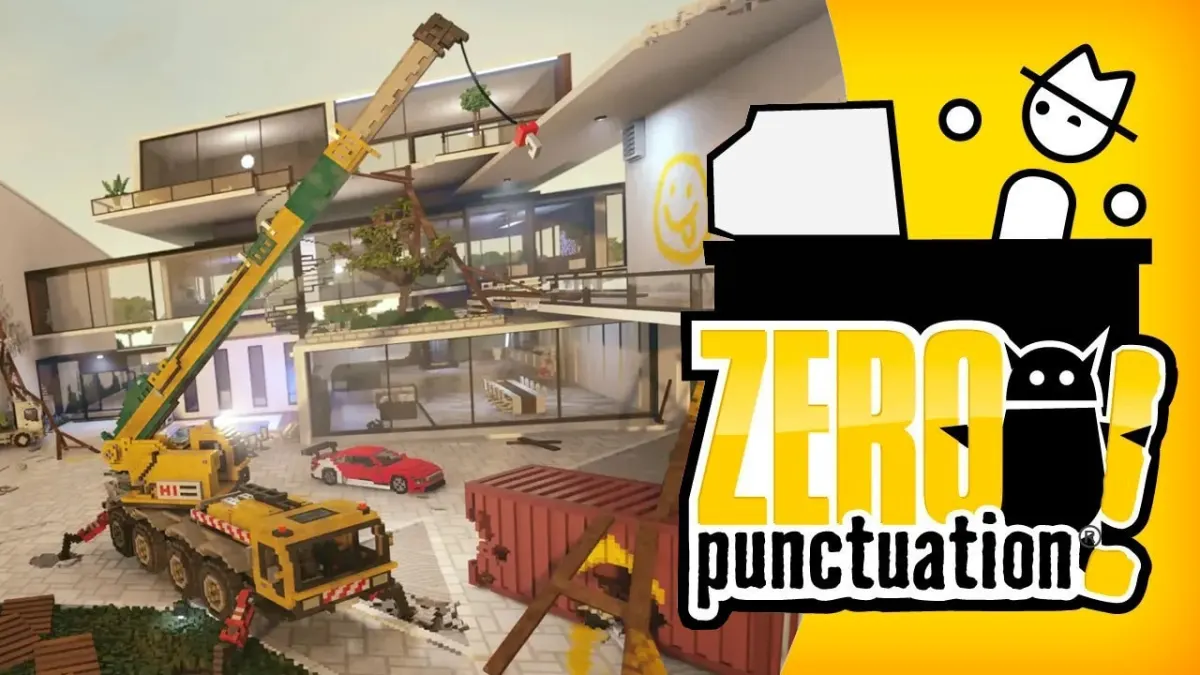The introduction of the physics engine to video games was right up there with the introduction of the potato to the Irish, or depending on your perspective the introduction of the smallpox blanket to the native Americans. What a sea change it was when loose objects weren’t just falling straight down onto the floor but also bouncing a little bit once they got there. Fucking hell, that was well worth enslaving all those Asian children to build video cards. But game technology is still yet to realise the full potential of real world physics. There’s no game yet where, say, the water level in the ocean is affected by the gravitational pull of a large orbiting satellite. Boy, I bet something like that would finally be the thing to fill the ever-sucking void. That’d definitely be the technical milestone that actually would compensate for a lack of actual gameplay or narrative innovation. But the question that has long sat awkwardly alongside the physics engine like an excruciatingly poorly matched blind date is this: could we one day construct an entire game world from physics objects, so the player can break everything apart to their heart’s content, from the buildings to the bidets?
And the recently off Early Access Teardown finally gives us our answer. Yes, asterisk asterisk asterisk asterisk. Yes, as long as you don’t mind the levels not being very big. And looking like they were constructed from Duplo by the kind of person who’d make for a particularly excruciating blind date. And as long as you can tolerate the voxel physics not accounting for tensile strength so a building still won’t collapse if it’s still connected to the ground by an inch thick piece of balsawood window frame or the neck of a baby bird. But besides all that, it can be done. So the next awkward question that sits on top of the initial one like a baby toad on the corpse of its mum is, what do you do with that once you have it? From a gameplay perspective, I mean. There have been games in the past that have attempted something like this in service of combat and invited players to shoot through blockades, create their own cover, collapse the terrain onto the enemies, etc, and what we took away from these attempts was that ultimately no quote “creative combat solution” has ever been as efficient as just pointing the gun at the thing and holding down fire until the thing dies.
Alright then, what if you just made a game about demolishing buildings? That seems to have been the initial concept of Teardown, which I cunningly deduce from the fact that it’s called Teardown and the very first level requires us to demolish a building. But while there’s certainly catharsis in destruction, it’s as fleeting as a hastily reached orgasm, especially in the moment after it passes when you have to think about who’s going to clean up the mess. And Teardown’s physics were frequently giving me the destruction blue balls because of the aforementioned baby bird neck issue, and even when I did successfully separate a building from the ground half the time it wouldn’t fall over but just drop three inches and stay there like the upper portion of a wall of Tetris blocks. But to Teardown’s credit, it swiftly realises that this is overthinking the issue. If you’ve created a world where anything goes the thing to do is simply to give us a relatively simple task and then reward us for finding abstract, lateral or maximally efficient ways of achieving it. You know, like how Scribblenauts would give us an egg and a stove and tell us to make an omelette, and then we’d achieve that by dropping a speedboat onto the kitchen counter from the top of Cthulhu’s head.
So the bulk of Teardown’s missions are heists, and this is where the game came into its own for me. There’ll be a range of objectives scattered across the map, items to steal or computers to touch or heretic babies to baptize, and as soon as you do the first one, an alarm sounds and you’ve got one minute to sprint around dunking all the remaining babies or whatever and leg it back to the car. So here the game becomes about strategically planning the optimal route and lateral thinking. Should we sledgehammer our way through a fence, extend a plank from a shed roof to a window, blowtorch off the grille and blow a hole in one of the interior walls to access the objective, or is it quicker to do something tragically quaint like use the door? I got weirdly into this, using the provided spray paint to mark my route and drilling my intended sequence of actions into myself over and over, it gave me the same kind of weird satisfaction I get from drawing up a work schedule for myself in Microsoft Excel, neatly arranging and color-coordinating all the boxes, and then looking at it and going “Boy, this would hypothetically be an efficient use of my time,” before slumping down in front of a pile of empty Funyun bags and binge watching Leisure Suit Larry speedruns.
New, different kinds of heists with different rules keep things from getting samey. There’s one where you have to get a bunch of heavy safes out of a building without letting them get rained on, so I dragged them to an elevated room, parked a truck underneath it and smashed a hole in the floor, and I was so pathetically proud of myself I spent ten seconds of my funny internet video bragging about it. But I’d say the game suffers as it goes along and piles on more and more tools and weapons for you to use. Very amusing for sandbox mode, I’m sure, but it means we no longer have to plan around preserving our limited shotgun blasts for the few select and most deserving walls on the route. Upgrade your shotgun once and it gives you twice as many shells, you might as well just tunnel from one objective to the next in perfectly straight lines. And then it starts introducing missions that are barely about fun heist planning at all. One of them’s just a fucking car race. Where’s the lateral thinking in that? I suppose you could cut across rougher terrain, but all the driveable vehicles are held together with Pritt stick and dubious pinky promises, so all the tires get sheared off if you drive too fast over a discarded crisp.
And then there are missions where you have to deal with enemies with guns. In a video game, no less, what’s the world coming to, and suddenly the closest thing to lateral thinking on offer is the route by which a bullet gets from one side of your brain to the other. So I guess at the end of the day Teardown is pretty much what it looks like: a physics experiment first and a game second. It casts a broad net of gameplay challenge, some of it hits and some of it misses and the destruction wasn’t quite as inherently cathartic as I’d hoped, possibly because it looks like Lego and taking apart Lego structures is only amusing up to the point you finally break your child’s resolve. Although I should mention the fire. The fire physics in this game are actually fucking amazing. As an experiment I briefly touched my blowtorch to a bedspread in a wooden building to simulate a carelessly dropped cigarette and watching the whole place go up was slightly worryingly hypnotic. I finally understand what that weird kid in high school was talking about in the weeks that preceded The Incident. There’s something absorbing about seeing a peaceful and orderly construction being slowly and inexorably destroyed by an ever-spreading, all-consuming chaos. I should take your mum to the buffet restaurant more often.






Published: May 4, 2022 12:00 pm